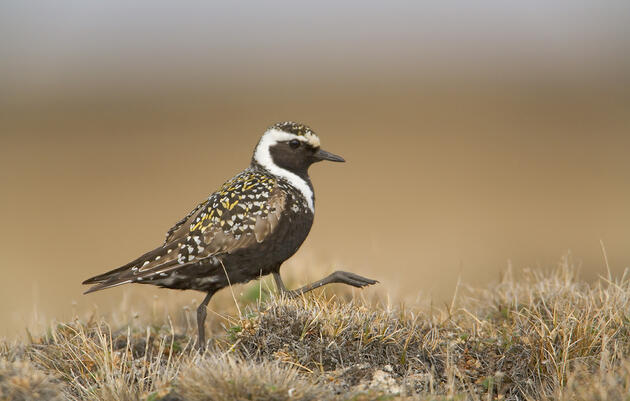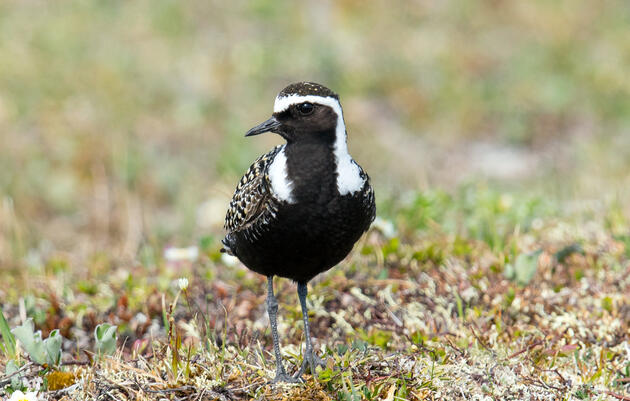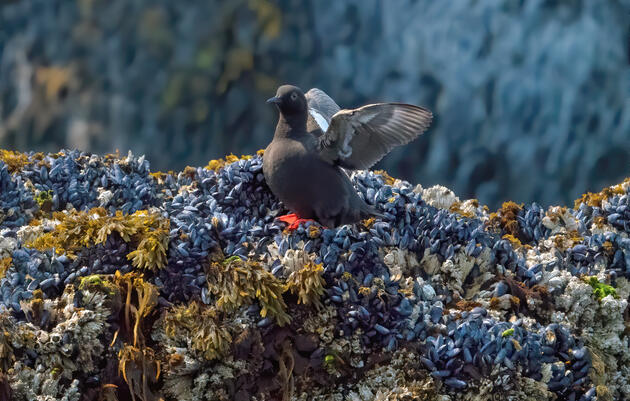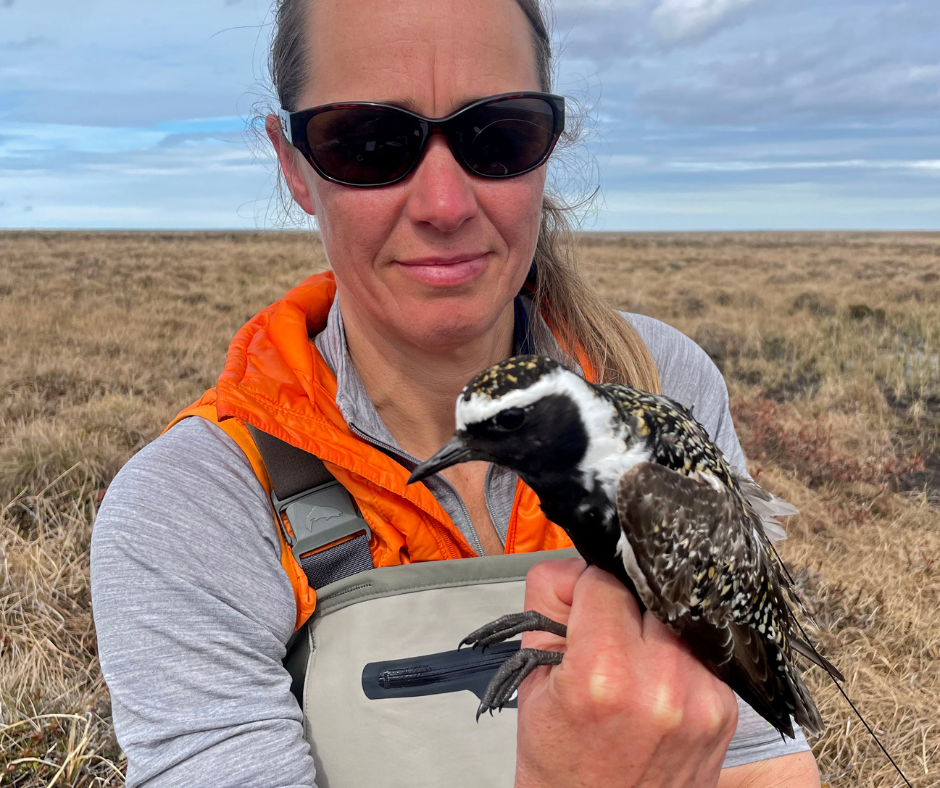
Thirty-nine countries. No, it’s not a Shakira world tour—it’s the American Golden-Plover’s migration journey. While the species has been spotted in Russia and Europe, their elliptical migration pattern sticks mostly to the Americas and the Caribbean Islands. In fact, the American Golden-Plover—a medium-sized, black-bellied wading bird—makes one of the longest migrations, including extensive nonstop flights over the ocean, of any bird in the world.
Second fact: In June 2023, eight American Golden-Plovers were equipped with 3.5-gram PinPoint GPS Argos tags (the world’s smallest GPS Argos tags, by the way) while nesting at Teshekpuk Lake Special Use Area at National Petroleum Reserve-Alaska on the North Slope of Alaska. Fitting these eight individuals with GPS tags is the first step of Tullik’s Odyssey: The American Golden-Plover Migration Project—a study overseen by Manomet, Inc. and U.S. Fish and Wildlife Service-Alaska Region with assistance from Audubon Alaska, Audubon's Boreal Conservation Program, Audubon Americas, and the Atlantic Flyway Shorebird Initiative.

Why Tullik’s Odyssey?
Tullik is the Iñupiaq word for plover. The species’ annual migration journey starts in the Alaskan Arctic, the traditional homeland of the Iñupiat among other Alaska Native peoples. And odyssey because they course through northern Canada to the northeastern United States, dart across the Atlantic Ocean, and wind up in Argentina. To return—no big deal—it cuts through northern South America, across the Gulf of Mexico, through the middle contiguous U.S., then Canada, and returns to the Arctic tundra.
And why this particular bird?
“American Golden-Plovers are … a fairly common bird yet they are in decline and have been in decline for a number of years,” says River Gates, Pacific Shorebird Conservation Initiative Coordinator with National Audubon Society (Audubon). “So efforts to focus on understanding what the limiting factors are in their annual cycle is why we are looking at their migratory stopover locations.”
Gates has worked for Audubon for seven years as the coordinator for the Pacific Shorebird Conservation Initiative, which is an international partnership that brings together scientists, community leaders, and conservationists to collaboratively protect and conserve shorebird populations in the Pacific Americas Flyway.

And why Teshekpuk Lake Special Use Area?
Gates was part of a seven-member team studying shorebirds at Teshekpuk Lake this summer. Researchers are returning to this area to repeat surveys that were initially started in 2007 and 2008 aimed at estimating the abundance of breeding shorebirds. Returning to the same area 15 years later allows researchers to calculate the trend of the breeding populations and if they have increased or decreased.
And Gates can confirm this. She’s been doing work in the Arctic for roughly 15 years. This season, however, the work needed for this project (equipping those eight nesting American Golden-Plovers) went surprisingly smoothly, That, and the field team was a “well-oiled machine” of all experienced Arctic researchers who have spent decades doing this kind of work.
But in addition to a smooth field season, Gates also says she’s grateful for the opportunity to work in the Arctic in the first place, so much so that she has a familiarity with it—especially during its brilliant summer season.
“The Arctic, especially during the summertime, you know, June through August, is one of the most living, alive, vibrating intact ecosystems of anywhere on the planet. It's just so huge, and it's so undeveloped and so important to so many birds, especially,” she says. “If anything, I'd love to share with people that the Arctic is alive … There are amazing opportunities for birds to live there and make their babies. Without that resource, they definitely would be further at risk than they already are. The fact that the breeding grounds are well intact is a good thing for conservation.”
Another good thing for conservation? Working to protect the 23-million-acre National Petroleum Preserve–Alaska.
Gates says in a very basic sense, all birds need habitats to live. They need them for foraging, for safety, and, in the Arctic in particular, for their breeding period. Despite the American Golden-Plover being in the NPR–A for just two to three months a year, if they didn’t have this region and opportunity to breed, their populations won’t maintain themselves.
“They're not going to continue to make babies and their populations will decline,” Gates says.
The NPR–A also hosts the pre-breeding period and the post-breeding period.
“You can think of it as all of the adults in the world go there to make their babies. And all of the babies in the world have to get out of there and go halfway across the world in order to survive,” Gates says. “If they don't have high quality, intact, disturbance-free habitats for that period of their annual cycle. Protecting the National Petroleum Reserve of Alaska – their breeding areas-is incredibly important for shorebird conservation.”
David Krause, Conservation and interim Executive Director for Audubon Alaska, can back that up.
"The Teshekpuk Lake Special Area is not only culturally irreplaceable for surrounding communities, but it is also one of the most important places on the planet for waterfowl and shorebirds," Krause says. "Each year, millions of migratory birds use this unique and fragile wetlands complex to nest and raise their young before taking off to the far corners of the world to complete their life cycles."
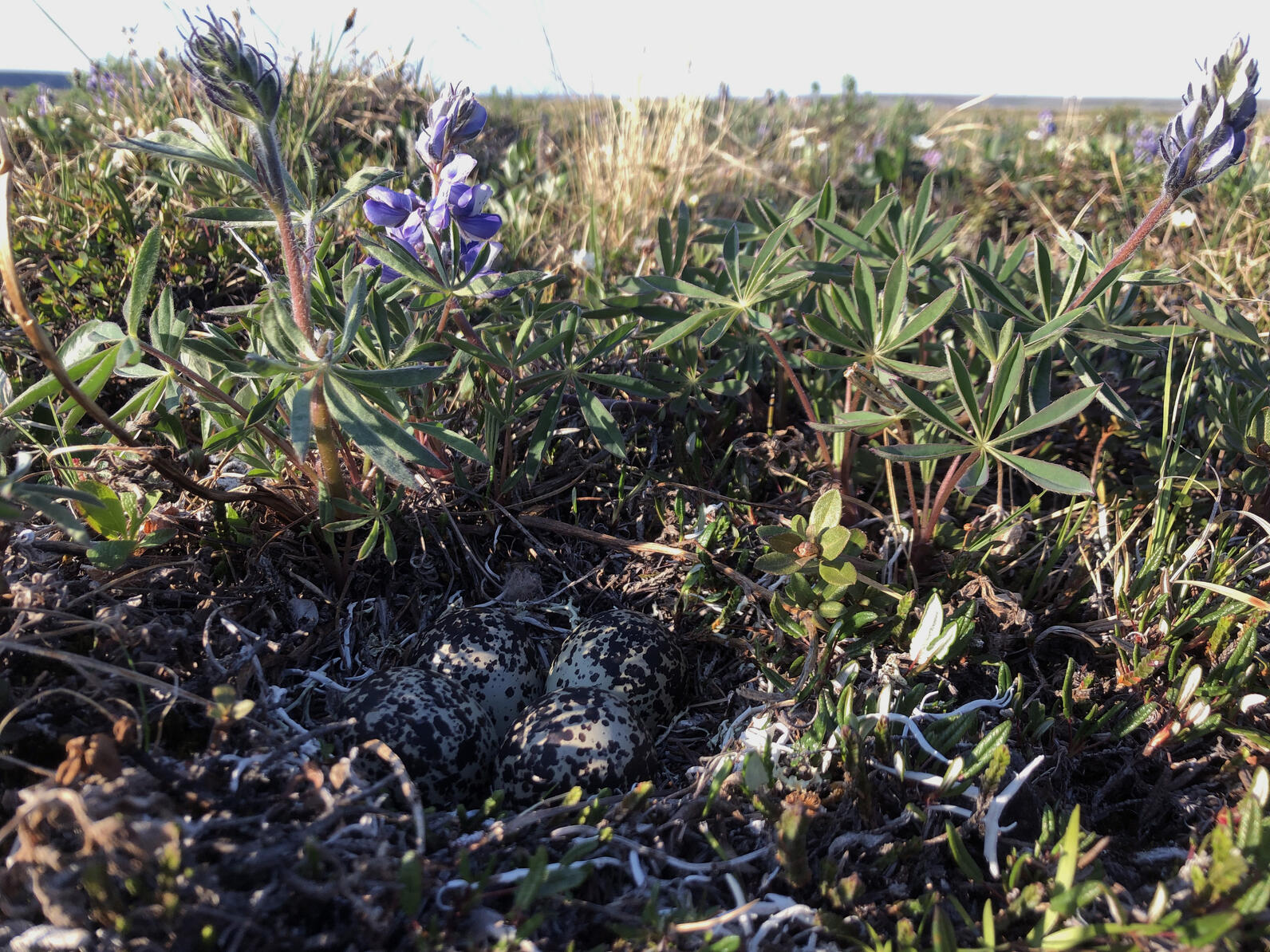
Tullik’s Odyssey will highlight the importance of this migratory bird habitat—the Arctic— and all the ones that follow during the southbound migration journey. Think post-breeding locations, staging areas, and stopover sites, and how the conservation of those places is vital to complete transoceanic migrations. This summer, during the post-breeding period, we’ll possibly detect the marked birds in the foothills of the Brooks Range or the Foxe Basin Peninsula in Canada. In late summer, the focus may shift to Hudson Bay and spots in New England. And from August through December, we’ll be following along through the upper Amazon in Brazil and coastal grasslands in Uruguay.
By tracking these eight individuals, Gates and her colleagues hope to underscore important work, like the Program for Regional and International Shorebird Monitoring (PRISM), an international collaborative science and bird population estimate and trend monitoring program, and its current implementation in the Americas. On the conservation side, we’ll spotlight threats like oil and gas development, and climate change to the Arctic tundra—an essential region for breeding and migration. How those things are Contributing to the aforementioned decline of the American Golden-Plover and shorebirds in general. And how urgent conservation solutions are needed.
In addition to the conservation concerns, Gates wants people to understand that these birds are also really amazing athletes. Mostly, she wants followers of this project to understand just what American Golden-Plovers and similar migratory species go through on a daily and annual basis, along with the challenges they face, and the impressiveness of their long-distance migrations.
“I mean, at one point, they'll … do a nonstop flight across the Atlantic Ocean. And that's pretty spectacular for a bird that weighs less than a chicken,” she says.
And one of the things that's important to her as a shorebird biologist is that people understand that these birds “are really cool” and that they're part of the landscape we live in.
“There's a shared love of these birds and a pride that people can have knowing that they graced their shores even for a short period of time, that might be just a couple of weeks of their life, but it's a critical part of their lifecycle,” she says. “And to have a little bit of pride and ownership in having these amazing birds come through their neighborhoods.”
That pride could lead to behavioral change and a larger awareness of human disturbance (and here is a great resource from the Atlantic Flyway Shorebird Initiative).
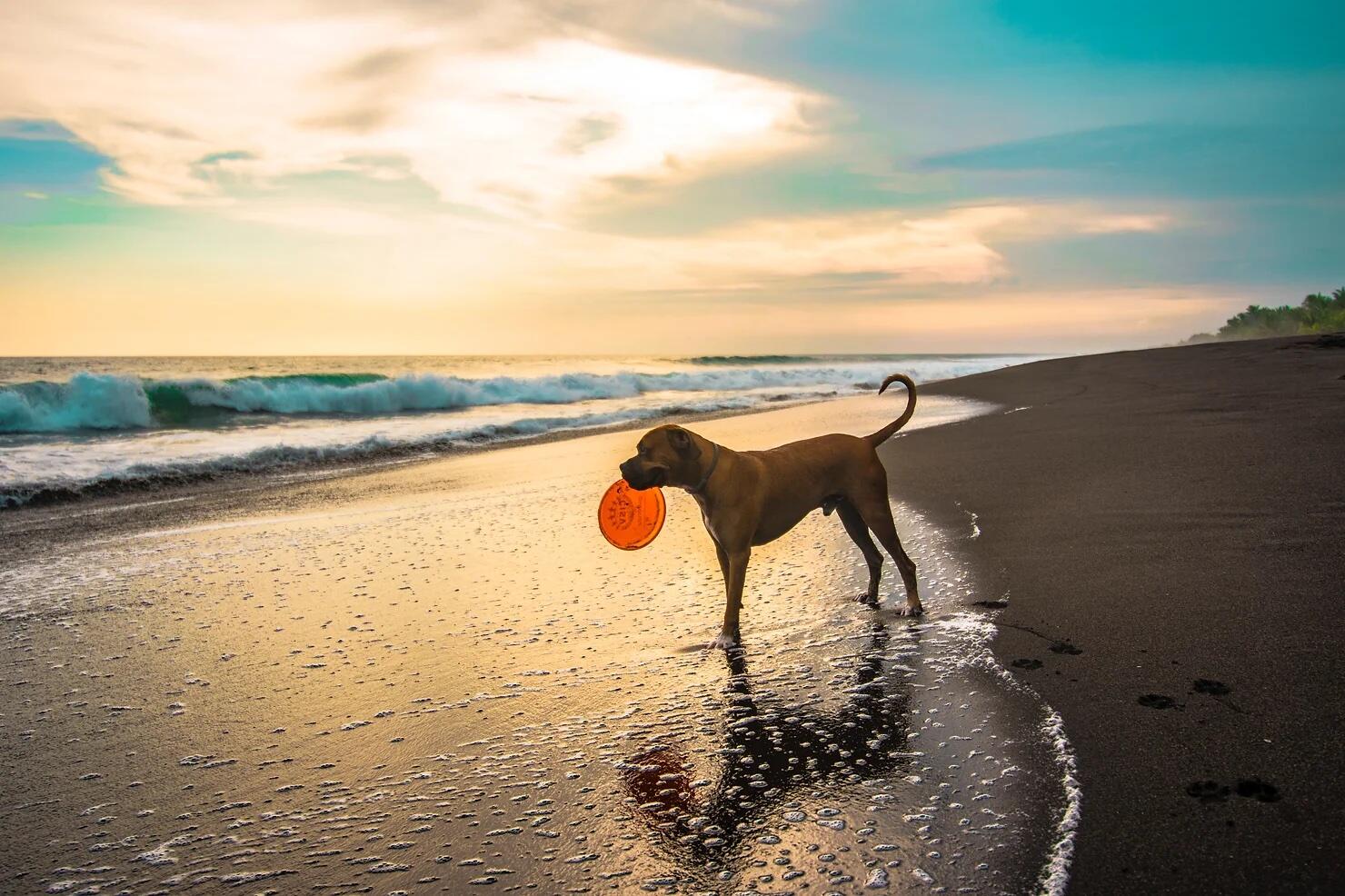
One thing that puts shorebirds more at risk than other types of birds is their dependence on beaches, wetlands, and open areas that a lot of people also like to enjoy. Therefore, human recreational disturbance can be a major threat to shorebird populations. Plus, people tend to visit the beach during the same time of year when these birds are there to eat, refuel, and sometimes nest.
“When they get disturbed by recreationists, that ends up having a cumulative impact on their ability to either breed or to migrate to the breeding grounds,” Gates says. “And so if people take into consideration that putting a dog on a leash will make a bird that's traveled 2,000 miles that day have a little bit of an easier rest for a couple of days before their next part of the journey—having that information in your head and an actionable item—I think is really powerful.”
Gates stresses there are multiple other ways people can support shorebird conservation.
That includes directly supporting organizations that work on bird conservation and volunteering for or getting involved with those organizations in addition to changing their own individual behavior and considering how it impacts birds.
Because while news of a changing climate and declining bird populations are a daily presence daily, there are still things the public can do to consider how their behavior impacts birds and change it.
“I think in this day and age, people feel very hopeless—and I would consider myself one of those people. And so one of the ways that I find hope in the world is by spending time with things that I love, and in this case, it's shorebirds,” Gates says. And another way she addresses that feeling of hopelessness is by devoting her career to those shorebirds through her work as a biologist and conservationist. “I think for other people who are less interested in being a biologist or conservationists, there are certainly lots of other things that they can do.”



